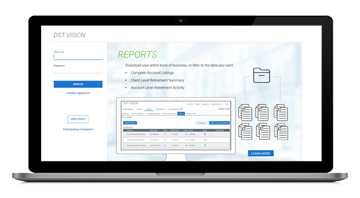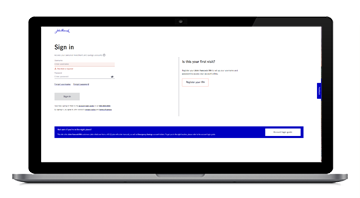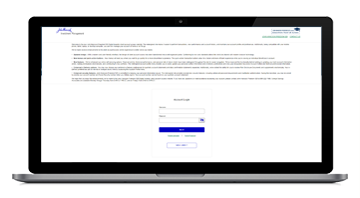Portfolio Intelligence podcast | Post-summer outlook: evaluating the market landscape
As we wrap up the summer, evolving economic indicators and interest rate policies are at the forefront of market discussions. Our Co-Chief Investment Strategists Emily R. Roland, CIMA, and Matthew D. Miskin, CFA, provide their insight into today’s market dynamics and explore strategic opportunities in bonds and equities.
Subscribe: Spotify | Apple | Explore all Portfolio Intelligence podcasts
With fresh economic data and anticipated interest rate cuts from the U.S. Federal Reserve, the market has a lot to look forward to as the back-to-school season ushers in a time of renewed focus. In this episode, host John Bryson sits down with Matt and Emily for a timely check-in as summer draws to a close.
They delve into the recent uptick in global Purchasing Managers’ Index (PMI) readings and how it might signal shifts in market sentiment. They also explore the current phase of U.S. earnings growth and discuss their strategies for stocks and bonds in the current market landscape. Here’s a glimpse into the conversation.
1 What opportunities do you see in bonds and equities?
Emily: We favor high-quality bonds like investment-grade corporates, mortgage-backed securities, and municipal bonds due to elevated yields and potential duration benefits. In stocks, we think it’s time to shift from riskier market segments to high-quality stocks. We are focusing on sectors like technology, communication services, and industrials, emphasizing companies with strong returns on equity and reasonable PEG ratios.
2 How do you view the current phase of the market cycle with regard to U.S. earnings?
Matt: Earnings growth will have to remain the key driver of equity returns as dividend yields are low and P/E ratios are high. S&P 500 Index earnings have exceeded expectations, but Q3 and Q4 earnings performance will be crucial to watch. Ultimately, we think strong earnings are the best thing this market's got going for itself.
3 How do you interpret the recent bounce in global PMI, especially for U.S. manufacturing and services?
Emily: Global PMI showed a reacceleration in growth in August. The U.S. manufacturing PMI at 53.3 was the highest reading of the year. U.S. services also performed well. United States is showing better relative growth compared to Europe, leading us to favor U.S. equities.
About the Portfolio Intelligence podcast
The Portfolio Intelligence podcast features interviews with asset allocation experts, portfolio construction specialists, and investment veterans from across Manulife John Hancock’s multimanager network. Hosted by John Bryson, head of investment consulting at Manulife John Hancock Investments, the dynamic discussion explores ideas advisors can use today to build their business while helping their clients pursue better investment outcomes.
Important disclosures
Important disclosures
This podcast is being brought to you by John Hancock Investment Management Distributors LLC, member FINRA, SIPC. The views and opinions expressed in this podcast are those of the speakers, are subject to change as market and other conditions warrant, and do not constitute investment advice or a recommendation regarding any specific product or security. There is no guarantee that any investment strategy discussed will be successful or achieve any particular level of results. Any economic or market performance information is historical and is not indicative of future results, and no forecasts are guaranteed. Investing involves risks, including the potential loss of principal.
MF4797092
Transcript
Transcript
John
Hello and welcome to the Portfolio Intelligence Podcast. I'm your host John Bryson, head of investment consulting and education savings at Manulife John Hancock Investments. Today is August 25th, 2025, and as the summer winds down, I thought it would be a great time to reconnect with Matt Miskin and Emily Roland, our co-chief investment strategists here at Manulife John Hancock Investments.
Matt, Emily, welcome to the show. Tell us what's going on with economies and markets around the world.
Matt
I'll, I'll kick it off here. You know, it's been a long week, in the last couple weeks. There's just been so much data coming out. So, we're still in earnings season. We're getting a lot of timely global economic data. We got PMI. So, these are Purchasing Manager Indices. They're great timely business surveys all over the world and really, they accelerated in August. Personally, I think there was some back-to-school shopping that showed up in the U.S. economic data. I know we're doing our part here in the Miskin household supporting the economy, but what we saw was basically in August a re-acceleration of global growth. And then to close off the week, we had the Jackson Hole Fed meeting where Powell had a very short speech. The markets ran with it though. Basically, he said, hey, we may be able to cut rates to the not-so-distant future. That wasn’t any new information really, but he did say, look, the jobs market is slowing. The prior jobs report did get revised down, that's something that's material to the mandate. He said inflation could be rising because of tariffs, but then it comes back down. So overall, the market took it as extremely dovish.
In our view, it's not that dovish, and we can get into that more as we discuss the Fed policy from here. But lots to unpack from the backpack. But overall, things have been holding up pretty well John.
John
Nice. You got a good back-to-school theme going. I love it.
Hey, Emily, Matt had mentioned Powell's Jackson Hole speech, and you know, it marked a rally on Friday. Do you think the market is correctly pricing in future Fed moves into all parts of the market, and especially the bond market? Do they agree?
Emily
You know, not necessarily, John, because we did see so many significant moves across assets, and really not much changed. We heard like a hint of a commitment from Powell that they're going to begin cutting rates in September, but the bond market was already pricing that in. We look really closely at the two-year Treasury yield—which is a good proxy of what the Fed is going to do next—and last week, it ended at 3.69%. That's down just two basis points since the start of the quarter and actually in the range it's been since 2023. We also heard from the Fed in the last summary of economic projections that they were anticipating two to three cuts by the end of the year. So, it wasn't really a new development, but risk assets loved it. So, we think that's pretty notable.
And what it does is it basically makes riskier parts of the market more expensive as they priced in those better outcomes. And then the bond market really didn't budge much, and we still see the valuations there as really attractive. We like the elevated income that's available in bonds. We don't think bonds have really picked up on the disinflation that we expect to see coming through the pipeline and we're starting to see as it relates to the housing market. Shelter is by far the biggest component of inflation. So, while we may see some tariff-related increase in goods inflation, we think the services side, most notably the shelter side, should help to bring inflation down. Bonds just aren't pricing that in right now.
So, while equity markets are sort of reflecting a lot of positive sentiment right now, we do think bonds are mispriced, and they offer a lot of value at these levels. It's something to think about taking advantage of as we head into the last few months of the year.
John
That's great. It's a great comment on bonds. I'm going to come back to that. But before I do, Matt, Emily had mentioned risk-on assets performing well. Looking at last week, small-cap value and mid-caps were part of that. What contributed to their outperformance, and do you see that trend continuing?
Matt
So, if you go down to market capitalization, financials are the biggest part of that market, and regional banks in particular are a big part of small caps and small-cap value. And this thought of the Fed cutting is helping smaller companies in general in terms of sentiment around them and regional banks. If they can cut on the short end and the longer end stays elevated, it steepens the yield curve, and that, in theory, makes banks more profitable. Now, that is all good news, and we do see a lot of value in small caps, especially on the bank side. The thing is, still with small caps, 40% of the indices don't make money. So, they're not even profitable. They're not even embedded in the valuation because if you don't make money, you can't even value the business on a P/E basis. So, you have to exclude 40% of the index, and then you could say, well, the rest that make money, they're kind of cheap. But at the end of the day, again, it was a lower-quality rally in small caps. What we've seen is that the higher-quality companies have struggled this year, and the lower-quality, kind of more speculative parts of the markets, have done better. So, we want to be careful with that.
Mid-cap is more legitimate to us. So, it's a much more profitable segment of the market. It's cheaper than large-cap, and what you saw recently too is some of the high-flying momentum names. Momentum investing is when you're looking at stocks that are up the most over the last six to 12 months, and markets have been piling into these high-flying momentum names. That's peeled back. Some of them got really expensive with like a 500x P/E on them. And so, as those peeled back and started to see selling pressure, you saw this rotation in mid and small. In our view, the mid-cap spot is a better place to be—more profitability than small, cheaper valuations than large, still getting exposure to the United States, which is again showing some of the best growth globally, even though global growth is picking up a little bit in August. So that's what we like to see. And mid-caps last week hit a new all-time high on a price basis, and so that was a nice development as well.
John
Ok, thanks, Matt. And Emily, Matt has started to talk about global growth, and he was taking a lot of credit for driving global economies with his back-to-school theme there. Can you talk to us about how you interpret the recent bounce in global PMI, specifically the U.S. manufacturing and maybe U.S. services.
Emily
Yeah, sure. By the way, I've been trying to come up with some snappy back-to-school analogies in the few minutes that we've been on this call. Matt did not give me a heads-up on our theme for today, so I'm going to see what I can do here on the fly.
So, PMIs are a really timely indicator of the health of underlying economies that we look at regularly. We get a couple of reads on it, and we got some preliminary data for August last week, and it did show a re-acceleration in global growth after dipping a little bit here in July. So, the U.S. manufacturing PMI was really the highlight—53.3—that's the highest reading of the year. I guess back-to-school related, like I think about my son, he's going into his sophomore year, he's on the football team. I would say the highlight of his schedule—they just were released today—is a gym class. So, we expected an A out of him in gym class, and that's what the U.S. manufacturing PMI was. The Eurozone also did tick up; it's a little bit over 50. Japan at 49.9. The U.K., which we watch closely, fell to 47.3, so ok.
Some mixed results on the services side, the U.S. was awesome—55.4—but the Eurozone is still just above 50, and Japan slowed a bit. So, what's notable to us here is if you sort of put it all together, the U.S. composite PMI—so services and manufacturing—is doing quite well at 55.4. The Eurozone's at 51.1. So, there's actually a pretty big gap that's opened up, suggesting that U.S. growth is doing better on a relative basis. And that basically growth in Europe is not as bad as everyone had feared, but a lot is being priced into the market. So, Europe is just on an absolute tear this year. We're seeing just exceptional results out of areas like European financials, up over 50% this year.
So, there's just sort of this narrative that's building and really being reflected in the price action that we're not really seeing in the data. So, for us, that creates a little bit of a conundrum. We still want to look at where the best relative economic growth and where the best relative earnings growth is in order to make the decision between U.S. and non-U.S. equities in terms of emphasizing them in portfolios. And it's still, you know, leading us to find better opportunities within the U.S., even though that's just not what we're seeing from a performance perspective so far this year.
John
Ok, so sticking on that opportunity with the U.S., Matt, I want to ask you about U.S. earnings. The S&P 500 earnings estimates are coming in strong. Valuations are definitely peaky. How do you feel we are? Where do you feel we are in the earnings-driven phase of the market cycle? Are you happy? Do you see more growth, or are you worried about a bubble?
Matt
Yeah. I mean, it's everything. Earnings growth is going to have to be the key driver of equity returns from here because the dividend yield on the S&P 500 is basically the lowest in history, just over 1%. The PE ratio on a forward basis is 22. We've only had 22 in 2021 and in 1999. So really, you know, the upside on multiples is basically 24, which would get you to a 2000 multiple, so the tech bubble. Earnings growth, though—you can get that. That's the healthiest way to grow the market and have the market go up, and that has been one of the best things that's been driving markets this year. They're up 11% in Q2. I think the estimate coming in was more like 6% or 7%, so beating by several percentage points.
The beat rate is like 80% this quarter. I mean, that is an awesome beat rate. Revenue growth was solid. So, you know, you had to come up with great earnings given the multiple, and the market did it. It showed up to class ready to go, sharpened pencils, and it just crushed the test.
Now here's the thing, though. There are more tests coming. So, the third quarter, we're gonna have earnings, the fourth quarter, and the comps are higher. So, it's like, you know, kind of grading on—I don't know if it's grading on a scale, but it's gonna get harder as the quarters come on. It's like the first test where they're like, 'All right, let me get you, you know, starting to get back to class.' And so that's something we're watching, though. And then broadly speaking, on a global basis, even though the U.S. has these tests coming up, so does the rest of the world. Earnings have not been that strong in Europe. Not strong in the emerging markets. So, they've got to pick it up because they priced in a lot of earnings recovery. But at the end of the day, we think, well, that's the best thing this market's got going for it—is how strong their earnings have been.
John
All right, strong earnings. You know, Matt, when you started answering that question, I thought you were going to miss the back-to-school opportunity, but you nailed it and then you overdid it. Well done.
Hey, Emily, I said I'd go back and talk about bonds. I want you to go a little bit deeper for me on bonds and then other opportunities that you and Matt are looking at that we haven't talked about in today's podcast.
Emily
Yeah, sure. So, you know, I will say just back-to-school-wise, like Matt keeps talking about tests and getting pencils ready. I never really cared that much about the school supplies. To me, it was all about the first day of school outfit. So, we're looking for a high-quality, you know, new shoes, new outfit for the first day of school, new backpack. And it's the same thing that we're doing in markets right now. You know, it's a great time, we think, to take some profits in riskier corners of markets like, yes, the momentum factor, which is basically chasing winners, which has been like the best-performing factor by far this year. It took a little bit of a breather last year, but it's up almost 20%.
Momentum is trading at elevated valuations versus the broad market right now. We're seeing kind of these unprofitable companies, you know, crypto-related assets, that's, you know, even meme stocks sort of back in the headlines here. We think it is a good time to sort of redeploy assets into high-quality stocks. We want to look to areas of the market that can really fight off margin pressure. We want to think about protecting against valuation risk. We want to own sectors and stocks that are trading at a reasonable price.
So, it's really about looking for companies with high quality, so good return on equity. And also, we've been looking a lot at the PEG ratio. This is getting back to the textbooks for those that have studied this. So, it's the PE ratio divided by earnings growth, which is basically a way to think about, you know, not overpaying for earnings growth. And that can really help manage valuation risk. So, from a sector perspective, that's leading us to overweights in areas like technology, communication services, as well as industrials.
Bonds, we continue to emphasize…it’s high-quality bonds here. Investment-grade corporates, mortgage-backed securities, municipal bonds. These are areas that are sporting elevated yields relative to their long-term history. And we think that the total return potential there is really attractive not only because of those elevated yields but also because we think duration could play a bigger role in portfolios here as global growth slows. Matt mentioned earlier Powell recognizing that there's challenges to the labor market. The U.S. jobs market has been the engine keeping the economy going here. We are starting to see some cracks there. The last jobs report had significant revisions to the prior couple of months. We're seeing things like continuing claims elevated.
So, we do think those cracks probably grow a little bit more here, which suggests that the economy does slowly slow from here. Which means bond yields are probably too high. There has been a very myopic focus on things like, you know, worries around the deficit and sort of worries about, you know, investing in U.S. assets in the wake of some political volatility. That's what's showing up too in the price, and the math has not really been considered here. We think the math is a good story in terms of combining that potential duration tailwind with the income going into the remainder of this year and on into 2026.
John
Emily, Matt, my summer wrap-up session has turned into a full gear analysis and master's class. So, I want to thank you both. Folks, if you want to learn more to keep on that theme, as always, please subscribe to the Portfolio Intelligence podcast. You can find it on iTunes or wherever you subscribe to your podcast, or you can find it on our website.
There you can also find viewpoints on all things investing, some great business-building ideas, and much, much more. As always, thanks for listening to the show.
John
This podcast is being brought to you by John Hancock Investment Management Distributors, LLC, member FINRA, SIPC. The views and opinions expressed in this podcast are those of the speaker, are subject to change as market and other conditions warrant, and do not constitute investment advice or a recommendation regarding any specific product or security. There is no guarantee that any investment strategy discussed will be successful or achieve any particular level of results. Any economic or market performance information is historical and is not indicative of future results, and no forecasts are guaranteed. Investing involves risks, including the potential loss of principal.
Duration measures the sensitivity of the price of bonds to a change in interest rates. Price-to-earnings (P/E) is a valuation measure comparing the ratio of a stock's price with its earnings per share.






